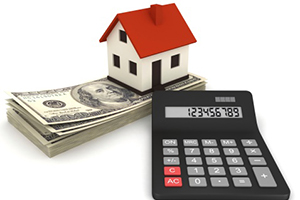By now, most people have heard that we are nearing the end of a real estate market cycle. However, many investors are not familiar with the actual stages of a market cycle, possibly because they only made their first real estate investments during an upcycle.
The reality is the real estate market cycle occurs in distinct stages over a long period of time, much like the overall economy. The market cycles through these stages as demand and supply fundamentals shift – due to various factors – but each phase can be defined by certain characteristics.
Industry professionals seek to understand, in relative terms, which phase a market is currently in to inform their acquisition and disposition strategies. While many believe it is impossible to accurately predict or time market dislocations and growth cycles, a continuous review and understanding of historical and current market fundamentals can allow investors to anticipate and prepare for changing market conditions.
For example, many economists predicted a recession on the horizon for over a year due to the historically long bull market the U.S. economy experienced. While some anticipated and prepared for this downturn, no one could have accurately known an event such as the COVID-19 outbreak would be the catalyst that drastically changed the direction of the U.S. economy. This shift quickly affected the way underwriters evaluate real estate opportunities.
This article will explain the four phases in a real estate market cycle – recovery, expansion, hyper supply and recession – and the impact COVID-19 has had. It is important to keep in mind that while all U.S. markets are affected by the overall national economy to some extent, individual markets will also be affected by their own microeconomic fundamentals. Therefore, each individual market can experience these cycles independently on their own time frame, and there is not a one-size-fits-all approach to determining each market’s current phase.
Recovery
While it may seem backwards to start with the recovery phase, it is the first phase the market experiences after a recession or a period of contracted growth, and therefore, the beginning of a new real estate market cycle. It is marked by fundamentals beginning to shift from negative to either a flattening or positive growth as the economy stabilizes. Consumers are likely to still have lingering anxiety from the prior contraction, but are beginning to regain confidence as the negative economic consequences of the recession, such as layoffs and bankruptcies, become less frequent and economic growth begins to spawn. The recovery phase can also be marked by increased hiring and consumer spending.
 For the real estate market specifically, this period is marked by occupancy slowly starting to rise and market rents starting to grow after the either flat or negative rent growth that marked the prior recession. As this phase matures, new development projects may start breaking ground and the Federal Reserve may begin to increase interest rates as the economy heats up and consumer confidence grows.
For the real estate market specifically, this period is marked by occupancy slowly starting to rise and market rents starting to grow after the either flat or negative rent growth that marked the prior recession. As this phase matures, new development projects may start breaking ground and the Federal Reserve may begin to increase interest rates as the economy heats up and consumer confidence grows.
Expansion
The increased occupancy and rent growth experienced during the end of the recovery phase marks the beginning of the expansion phase. Consumer confidence fully returns to the market and unemployment numbers begin to decline as companies begin to hire at a robust pace. As demand for workers increases, wages start to increase as well, increasing consumer spending ability. As a result, we typically see U.S. gross domestic product (GDP) growth return to normal levels — approximately 2-3%.
For the multifamily real estate sector, this phase is marked by increased demand for housing units due to increased consumer spending power and in-migration of new tenants who have moved into the market for higher paying jobs. These factors boost occupancy and rent growth, which expands returns for investors. As these real estate fundamentals improve, sponsors will seek to accelerate supply to match market demand, increasing investment in value-add projects as well as new construction starts. Overall, this phase is marked by heightened liquidity in the market compared to the prior two phases as investors attribute less risk to investments while also projecting increased returns.
Hyper Supply
After a period of sustained expansion, the market could shift into a phase known as hyper supply, as the supply of units outweighs the demand. In the broader economy, GDP, interest rates, and job growth are stable, however, additional supply of goods and services may enter the market at overstated prices compared to demand due to overconfidence, eroding the balance between supply and demand.
During this phase, rent growth and occupancies can still remain above normal levels, but the additional supply in the market causes these rates to peak and begin to decline. Due to this phase still having relatively positive fundamentals, construction starts and investment activity still continue (and are warranted in certain circumstances). This continued activity, however, can eventually shift the supply demand relationship to a tipping point that eventually leads to a contraction or recession.
The increased supply can refer not only to units but also to the supply of capital in the space. Increased demand from investors for assets to invest in can lead to a decrease in returns. Some investors solve this issue by increasing leverage and exposing their investments to more risk.
Recession
A recession, in terms of the overall economy, is typically defined as two consecutive quarters of negative economic growth. In this phase, it is not uncommon for central banks, including the Fed, to reduce interest rates in order to inject liquidity in the market and stabilize declining asset values.
 COVID-19’s Impact on the Market Cycle
COVID-19’s Impact on the Market Cycle
Causes of recessions vary in every cycle. They can be a product of economic dislocation, as was the case in the Great Recession, or they can be caused by unexpected non-economic events, such as the COVID-19 outbreak. As a result of the financial fallout caused by COVID-19, the overall economy has drastically shifted its direction and many experts agree the U.S. economy has entered the recession phase of the overall economic cycle.
Consequently, the real estate market may shift into a downturn as broader demand wanes, uncertainty rises and consumer confidence falls. Tenant demand for apartments has begun to contract or flatten across the country due to uncertainty in the broader economy. This has resulted in declining or stagnant rent growth in certain markets. Transactions have slowed since the national emergency declaration on March 13 as the market has become less liquid because of the uncertain economic environment the pandemic has unleashed, causing investors to take a wait-and-see approach.
While multifamily tends to be a resilient asset class in a recession, it is not immune. Understanding market cycles help multifamily investors and operators properly prepare for recessions by increasing liquidity and lowering leverage to ride out recessions until the market restarts the cycle and enters the recovery phase. Additionally, a recession can produce incredible buying opportunities for those that have liquidity on hand when distressed assets are being sold at steep discounts.
Conclusion
As mentioned above, each individual market experiences the real estate market cycle phases in their own unique manner. While all markets are affected by the overall U.S. and global economies, the health of their own local economies can have an even greater influence on these phases. Therefore, it is critical that investors understand these phases not as a tool to time the market, but instead to make informed investment and operating decisions that limit their investments to exposure when markets contract, while allowing them to capitalize on the growth phases of markets.
